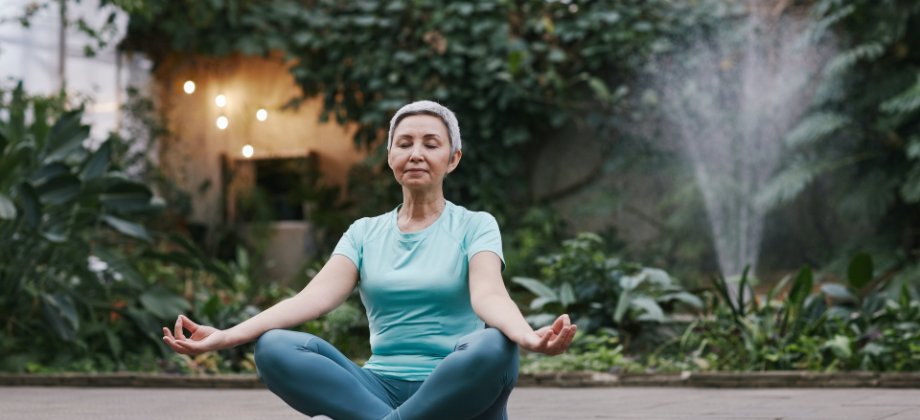
Karma Yoga: stepping onto the path of selfless action
As a yoga teacher, I’m sure you’re well aware that there are different types of yoga, and each type pertains to a specific school of thought. And we all probably have heard of “Karma Yoga”, but do we ever stop and think if we’re concretely putting its principles into action in our daily life?
The thing is that Karma Yoga is commonly misperceived as mere volunteering. But actually, Karma Yoga is a rather broad concept that can have multiple layers of meaning; that’s why we’d need to take a step back and shed light on Karma Yoga to better understand how to apply its principles in your daily life.
In this way, you can truly embrace Karma yoga and make it more than just a practice: it can become a way of life.
What is Karma Yoga
Let’s start from the beginning: what is “Karma” anyway?
The term Karma is nowadays part of our vocabulary, and yet, what happens is that the concept of Karma itself is misused and abused so much that nowadays, it is commonly perceived as some kind of moral justice system. And as such, we tend to believe that if we don’t behave nicely, we’re attracting bad karma, which looks like a curse on our own lives.
But karma is not something that works in a way that allows you to sort of “earn” or “lose” points. Karma is a Sanskrit word that stands for “action”. And when the concept of Karma is applied to yoga, we have the yoga of selfless action, which is, as you know, one of the so-called “4 paths of Yoga”.
The principles of Karma Yoga are stated in the third chapter of the Bhagavad Gita, where it is described in these words:
"The man who has realised his spiritual identity has no personal interest in performing the prescribed duties, nor does he have any reason not to perform those duties. He is not dependent on anyone for anything. One must therefore perform one's work and actions out of duty, without attachment to the fruits of action, because by acting without attachment, one attains the Supreme." (Bhagavad Gita, III, 18-19).
So, broadly speaking, Karma Yoga aims to promote concrete, selfless action: it is not a passive way of living. Still, it is instead seen as the ability to act mindfully in the present, without any expectation, and above all, by putting oneself at the service of other beings.
To better understand what Karma yoga is, we can focus on the main two pillars of this path:
- Every action must be detached and selfless;
- Every action must be performed in awareness.
Thus, as you can understand, the karma-yogi is an individual that can act completely detachedly, mindfully, and selflessly. The Karma Yogi is simply someone who lovingly makes acts of service only for the sake of it, without expecting anything in turn.
The benefits of Karma Yoga
Karma Yoga brings significant benefits, including:
It helps decrease and manage our sense of ego. When we practice Karma Yoga, we do, as we’ve seen, a completely selfless action. And so, when you stop involving your ego in your daily activities, slowly, your ego begins to diminish.
You can better visualise your priorities and complete each task without attachment and without personal desire.
You feel a greater sense of inner peace: when our actions are detached, we don’t expect anything in return, and for this reason, we’re also less anxious.

How to cultivate Karma Yoga in daily life
Karma yoga is indeed a broad concept, and you might feel kind of lost because you don’t really know how to apply its principles concretely. Obviously, there are a great number of ways you can concretely embrace karma yoga in your life. Whether it’s giving a neighbour a helping hand or offering some support to a friend in need, the number of possibilities is virtually endless.
Whatever you choose to do, the essence of karma yoga is to make service a regular part of your life. So start by cultivating gratefulness: the moment you do something, remember to express gratitude.
Then, you should also try to be genuinely mindful in everything you do; never do things in “autopilot mode”, but do every action mindfully because, as you know, every action has a reaction so you decide which way you want to go! And when you do something, try just not to think about the result of that particular action but always do it from the heart.
A more concrete tip could be to start by making a weekly commitment to engage with a local charity, giving your time and energy to support the work they do. If you’re a studio owner a nice idea is to do some charity yoga and invest the money earned from some classes or events for a good purpose, such as planting trees or helping less fortunate individuals.
Another useful practice is to get to know the people you are serving. Rather than thinking of service in the abstract, get on the ground and communicate with those you serve.
Let yourself be humbled by their knowledge and experience. Forge meaningful connections and let yourself be touched by their lives and stories. In this way, you can truly embrace Karma yoga and make it more than just a practice: it can become a way of life.






